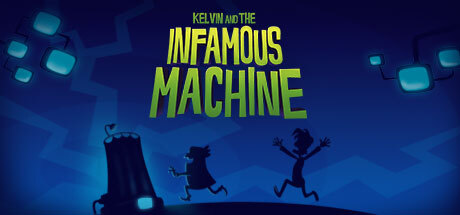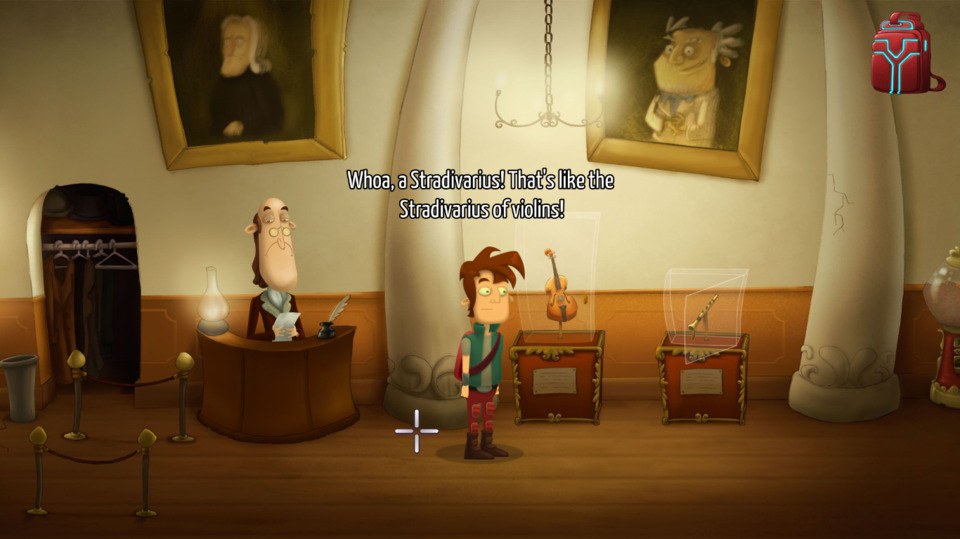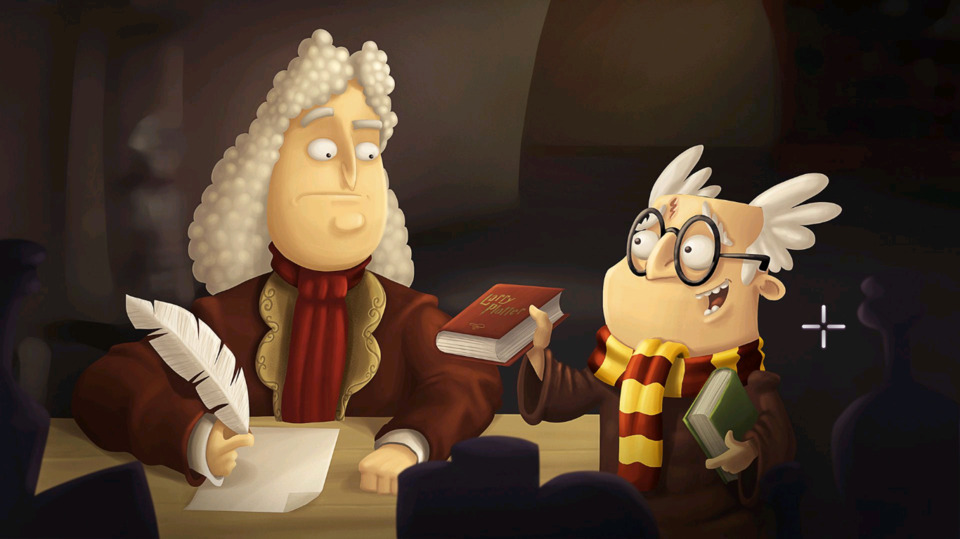Indie Game of the Week 261: Kelvin and the Infamous Machine
By Mento 3 Comments

I'd like to think I'm a video game polymath here at the Indie Game of the Week Institute for Weekly Indie Game Examinations but truth be told I have my handful of pet genres and the Indie industry, dutifully, never seems to stop working within them. This week the not-so-dubious-wheel has moved back around to "'90s humorous point-and-click adventure game" and, with it, Kelvin and the Infamous Machine: a 2016 release by Argentian studio Blyts. Kelvin, a not particularly intelligent research assistant, witnesses his mad inventor boss Professor Lupin lose the last of his sanity over a poor review of his new shower-based time machine - the "infamous machine" of the title - and go on a tear changing history and weakening the fabric of spacetime as a result. Sent out into the field by Lise, the professor's more competent research assistant, Kelvin flits between several time periods to re-inspire the geniuses that Lupin enviously resented enough to sabotage. Kelvin, unsurprisingly, does this by collecting random objects and using them on other random objects.
Right off the bat, Kelvin and the Infamous Machine ticks all the boxes I check for when starting a new adventure game: there's a "highlight all hotspots" button (it's on F, which took me a while to find... oh, "find"! I get it now!), you can double-click screen exits to immediately warp to that area rather than wait for the hero to slink all the way over there, and the puzzle difficulty is once again kept in check by an episodic structure that eliminates the natural accumulation of screens, hotspots, and inventory items that often make the late-game of these types too cumbersome to manage. Each of the game's chapters is wholly separate: you carry nothing over from the previous chapter, and each is treated as its own distinct adventure on the main menu screen (which makes me wonder if more chapters (or DLC) were intended at some point). That also means that you can slip back into any one of them and start it over if you've decided to hunt for the game's achievements, most of which can be easily missed if you aren't paying attention to their hintful descriptions. That said, there's not a whole lot of longevity, between the linear course of solving its one-solution puzzles and the game's relatively brisk pace and brief size. I'd say each chapter is likely to take about an hour, with the exception of the fourth and final which is more like a five minute finale.

Kelvin and the Infamous Machine's sense of humor is... well, I would define it as "genial." It's not overly gross, offensively bad, beholden to memes, deals only in rough chuckles, nor particularly cringeworthy. It's the perfectly tolerable type of situational comedy fare adventure games of this sort have enjoyed dating back to the genre's early days; a customary bedrock of occasional jokes and asides that is pretty much expected of any point-and-click from its era that wasn't trying to be grim and/or cinematic. The type of humor the word "levity" was created to embody. That is to say, that the game's jokes are occasionally amusing and are certainly better than the low bar video games have set for themselves over the years, if otherwise unremarkable. They got me a few times and that's seriously more than I can ask for one of these throwback homages. Kudos. (I'm damning it with faint praise like I'm some hilarious jokes wizard, but... well, it can be real hard to objectively judge any piece of media's humor quotient. It's fine. It won't annoy you, probably.)
Gameplay-wise the game is about what you'd expect. You have an inventory that can be accessed at any time in the top corner - you never have so many items that you need a separate screen - and most can be examined closer, which might offer a hint as to how they are to be used. Since each chapter takes place in their own self-contained areas, you're only ever looking at about seven or eight screens and about thirty hotspots total, so if you decide to pull the old brute force method of using everything on everything you should hit pay dirt before too long. That said, the puzzles aren't too oblique and with a few exceptions you should always have a fairly decent idea of what you ought to be doing, beyond the primary goal of inspiring the local genius of that time era and geographical region. Clearly you need to drop an apple on Isaac Newton's head, but with the protagonist's unexplained phobia of apples - presumably a riff on Guybrush's strong aversion to porcelain - he'll need a roundabout way to make it happen, and some experimentation gives you enough clues to get started. Otherwise, the standard pattern of talking to every NPC and taking everything that isn't nailed down ought to be enough to get the lateral thinking ball rolling.

Kelvin and the Infamous Machine is as brazen in its stated intent as most any throwback Indie homage, doing its darndest to live up to the storied legacy it's chosen to invoke, and for the most part succeeds. On a technical/feature level it gets everything right, barring perhaps a fast travel system (though the individual chapters are short enough to not really need them). Graphically, it has a distinct art style that works well enough for the LucasFilm madcap adventure game tone it establishes, even if there's always that distracting feeling that many of its more normal-looking background characters are probably Kickstarter backers who had no qualms about affecting immersion if it meant they got to appear in a video game, albeit in likeness only. Regarding the story and puzzles though, it can err a little on the simple side with a narrative that wraps up too quickly and neatly and not nearly enough is done with the time-travel conceit beyond this Mario's Time Machine-tier historic figure pep talk jamboree. After all, Day of the Tentacle explored the potential of solving puzzles in four dimensions with its timeline-scattered cast; Kelvin and the Infamous Machine had an opportunity to do something similar, and almost does so with its finale, but opted to keep things overly simple. Perhaps that's for the best - I like the episodic format too much to want to tinker with it too much - though it's always rough when you can't compete with the complexity of a game turning thirty next year. Maybe that's a recurring issue with these homages though: they venerate those that came before so much they can scarcely conceive of trying to out-do them in any meaningful way. Besides that triviality though, Kelvin and the Infamous Machine hits the target it aims for with few significant drawbacks and comes recommended if you were as enthralled by the output of Gilbert, Schafer, Grossman, et al as this game's developers evidently were.
Rating: 4 out of 5.
| < Back to 260: Death's Door | The First 100 | The Second 100 | > Forward to 262: Vaporum: Lockdown |
